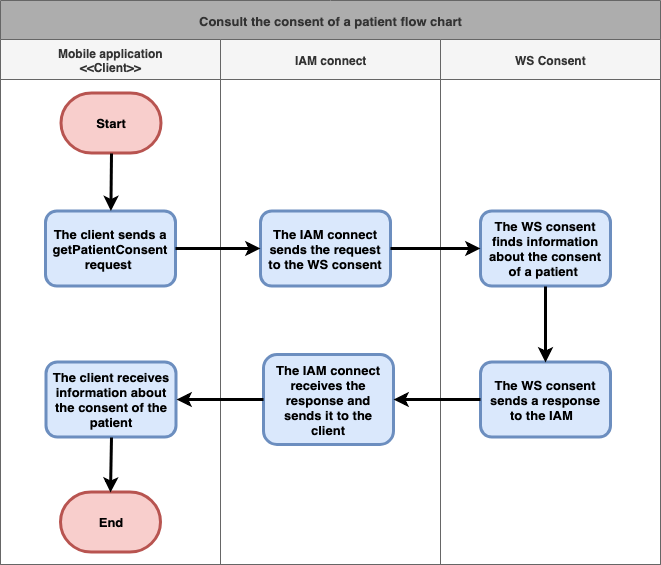| Table of Contents |
|---|
Used documentation
| Cookbook/ materials | Version | Location | ||||||||
|---|---|---|---|---|---|---|---|---|---|---|
| eHealthConsent WS Cookbook | 1.9 | KMEHR | ||||||||
| Identity & Authorization Management (I.AM) Token eXchange Technical specifications | 1.0- | https://www.ehealth.fgov.be/standards/kmehr/en | ||||||||
| Jira ticket MHEH-12 | - |
| Jira ticket MHEH-13 | - |
| Jira | ||||||
|---|---|---|---|---|---|---|
|
| Jira | ||||||
|---|---|---|---|---|---|---|
|
| Jira | ||||||
|---|---|---|---|---|---|---|
|
| Jira | ||||||
|---|---|---|---|---|---|---|
|
| Jira | ||||||
|---|---|---|---|---|---|---|
|
| Jira | ||||||
|---|---|---|---|---|---|---|
|
General information
In the figure below, we present a logical view about the relationship between the three basic services of the ehealth platform that are the WS Consent, the Therapeutic link WS, and the Therapeutic exclusion services. A consent can be managed by different types of end-users:
...
A consent may have two types. Indeed, it is called prospective when it is valuable for data posterior to the signing date (i.e. the date that should be taken into account is the ‘medical date’ of the transaction). It is referred to as retrospective in the opposite case. This does not mean that all documents with a medical date anterior to the signing date of the consent will automatically be made available
The Consent service provides four methods (it is noteworthy that in this use case only the GetPatientConsent method is used):
- The "PutPatientConsent" method allows an end-user to declare the patient consent (i.e. make a consent active)
- The "RevokePatientConsent" method enables an end-user to revoke the patient consent (i.e. make a consent inactive)
- The "GetPatientConsent" method allows an end-user to consult information about a consent and to check whether its status (i.e. active or inactive)
- The "GetPatientConsentStatus" method is similar as the "GetPatientConsent" method with the status of the consent returned in the response message.
Basic flow
| Flow | Specification | ||||||||||||||
|---|---|---|---|---|---|---|---|---|---|---|---|---|---|---|---|
Use case ID | ATH-UC-12-BF | ||||||||||||||
Use case name | Consult an active the consent of a patient using the GetPatientConsent method | ||||||||||||||
Actors |
| ||||||||||||||
Short Description | In order to consult the consent of a patient using the SOA-based version, it is important to use the Token exchange service in order to convert a JWT token into a SAML one (and vice versa). The aim of this use case is to check a consent status after its activation or revoke. | ||||||||||||||
| Priority | 1 (High) Must have: The system must implement this goal/ assumption to be accepted. | ||||||||||||||
Pre-Conditions |
| ||||||||||||||
Post-Conditions |
| Steps (basic flow) | 0 | 1 | 2 | 3 | 4 | 5 | 6 | 7 | 8 | 9 | 10 | 11 | |
Exceptions (exception flows) |
| ||||||||||||||
Frequency |
| ||||||||||||||
Alternative flow 1
...
Use case ID
...
ATH-UC-12-AF-01
| ||
Steps (basic flow) | 1 | The user tries to consult the consent and the client sends a getPatientConsent request to the IAM connect |
| 2 | The IAM connect routes the request to the WS consent | |
3 | The WS consent finds information about the consent of a patient | |
| 4 | The WS consent sends a response to the IAM | |
5 | The IAM connect receives the response and sends it to the client | |
| 6 | The client receives information about the consent of the patient | |
...
Use case name
...
Consult an inactive consent of a patient
...
Actors
...
Citizen
- HC party
...
Short Description
...
In order to consult the consent of a patient,
...
1 (High)
Must have: The system must implement this goal/ assumption to be accepted.
...
Pre-Conditions
...
- The user is logged in
...
Post-Conditions
...
Steps (basic flow)
...
0
...
2
...
4
...
6
...
7
...
Exceptions (exception flows)
...
- Invalid or incorrect data:
- Invalid transaction identifier.
- Invalid request sender.
- Invalid healthcare party identifier.
- Invalid patient identifier (invalid SSIN, eID, SIS numbers).
- Invalid consent type.
...
Frequency
...
- Every time the user wants to consult the consent of a given patient
Alternative flow 2
| Flow | Specification | Use case ID | ATH-UC-12-AF-02 | |||||||||||||
|---|---|---|---|---|---|---|---|---|---|---|---|---|---|---|---|---|
Use case name | Unsuccessful completion | |||||||||||||||
Actors |
| |||||||||||||||
Short Description | In order to consult the consent of a patient, | |||||||||||||||
| Priority | 1 (High) Must have: The system must implement this goal/ assumption to be accepted. | |||||||||||||||
Pre-Conditions |
| |||||||||||||||
Post-Conditions | Steps (basic flow) | 0 | 1 | 2 | 3 | 4 | 5 | 6 | 7 | 8 | 9 | 10 | 11 | Exceptions (exception flows) |
| |
Frequency |
| |||||||||||||||
...
